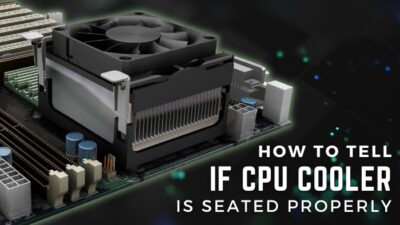A processor is the brain of a computer. And just like your brain is protected by a hard skull, the computer brain also needs something to shield it from the environment. That’s where the IHS comes into play.
And not just protection, the heat spreaders can also transfer heat efficiently, keeping the CPU as cool as possible for as long as possible.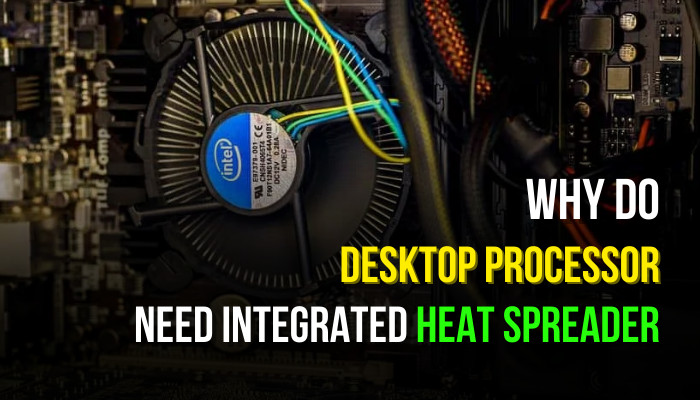
In this article, I’ll explain what the IHS is, how it works, and why your processor needs one.
Let’s begin!
What is a CPU’s IHS & How Does it Work?
The Integrated Heat Spreader, or IHS for short, is a metal lid that covers the exterior of a computer’s processor. It is a protective shell around the processing silicon. The surface of the IHS also makes contact between the heatsink and a GPU or CPU processor.
It is a bridge that carries heat from the processor to the CPU cooler.
The IHS is typically made of metal and attached directly to the top of the CPU die. It helps distribute heat evenly across the surface. So, the heatsink, fans, or liquid cooling systems can remove the heat more effectively. 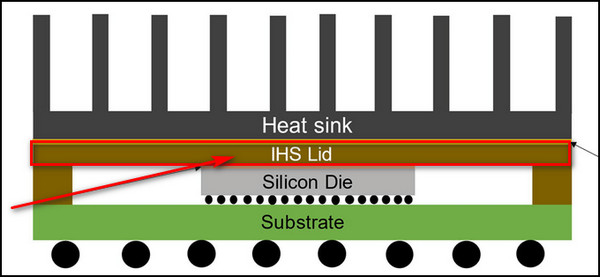
The heat spreader also protects the delicate transistors and other components on the CPU die from any kind of physical damage.
And by spreading out the heat generated by the CPU, the IHS allows the processor to run at higher speeds for longer periods without permanent damage or thermal throttling and overheating.
Why do Desktop CPUs have IHS?
Initially, the heat spreaders are made to protect the CPU die from damage by the users when installing aftermarket parts. Besides offering mechanical safety, there’s no actual point in having an IHS, as you get better cooling when the CPU dies and the heat sink makes direct contact.
That said, the heat spreaders offer improved thermal conductivity, and for CPU overclockers, the IHS makes sure the processor can operate longer without issues.
Below, I’ve explained the necessity of IHS for desktop CPUs.
Here’s why Desktop processors have heat spreaders:
Heat Dissipation
CPUs perform complex calculations and generate a lot of heat. The heat spreader distributes this heat evenly across its surface, making it easier for cooling systems, such as air or liquid coolers, to effectively remove the heat.
Protection
The heat spreader also protects the delicate transistors and other components on the CPU die from physical damage. It acts as a barrier between the die and any external cooling solution, preventing material harm that could result in permanent performance degradation or failure.
Improved Thermal Conductivity
The heat spreader is made of a high thermal conductivity material, like copper & aluminum. It improves the thermal conductivity between the CPU and the cooling solution, which allows the heat generated by the processor to be quickly and efficiently transferred to the surrounding environment.
You should clean old thermal paste to help the CPU cooler dissipate heat easily. Read our separate article how to do that.
Overclocking
OC is used to increase the clock speed of a CPU to boost its performance. In that case, the heat spreader ensures that the processor can sustain these higher speeds for as long as possible without permanent damage due to overheating and thermal throttling.
What are CPU Heat Spreader Materials?
As one of the main reasons for using a heat spreader is to dissipate heat efficiently, it is important that the material used to make the IHS should be highly conductive. That’s why the most common materials used for IHS are aluminum, copper, or a combination of both.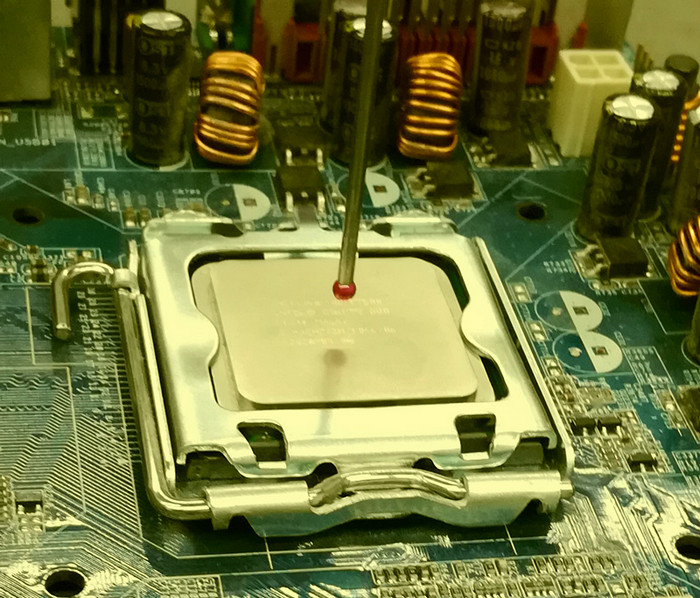
Aluminum is a lightweight material that provides good thermal conductivity. Also, for being cheap, it is generally used in entry-level and mid-range CPUs.
However, some high-end processors have IHSs with separate aluminum plates.
Copper, on the other hand, is a more expensive and dense material with an even better thermal conductivity than aluminum. It is used in top-tier CPUs.
Sometimes, copper is combined with aluminum to form an aluminum-copper hybrid IHS.
So, the choice of material for an IHS in a CPU will depend on factors, such as cost constraints, performance requirements, and form factor considerations. And both aluminum and copper have their strengths and weaknesses, and the best choice will depend on the specific needs of the processor.
Why are Integrated Heat Spreaders Required on CPUs but Not Necessary on GPUs?
Although GPUs usually generate more heat than CPUs, they don’t need an IHS because GPUs have more surface area to dissipate heat. The larger size of graphics cards means that they can handle their heat dissipation without the need for a heat spreader.
Also, for being a lot bigger than CPUs, graphics cards have more space for a cooling solution, for example, liquid cooling systems and larger heat sinks.
So, GPUs can easily handle their heat dissipation without an IHS.
Besides, GPUs and CPUs manufacturing processes are different. That’s why GPUs have a separate thermal profile. As a result, a heat spreader is not necessary for a graphics card to maintain stability and performance.
The IHS also adds additional cost to the manufacturing process, and its absence means the GPU cost is reduced.
We explored how hot a CPU can get without a heatsink attached. If you want to know the results, check our article.
Why do Laptops use a Heat Spreader instead of Heatsinks in Their Cooling System?
For being portable, laptops have limited space for cooling systems. That’s why a heat spreader is more useful than a heat sink because it is a more compact cooling solution as it provides a larger surface area for heat dissipation in a smaller form factor.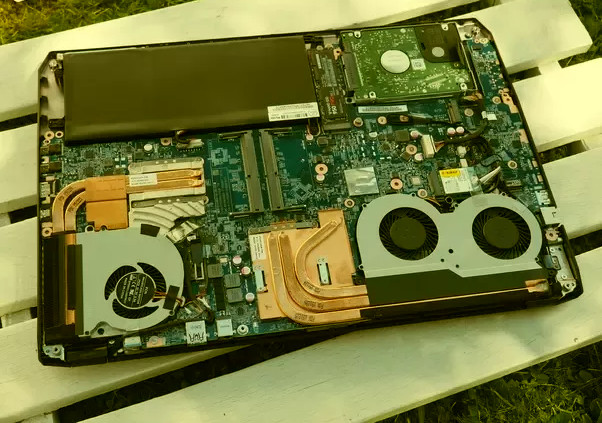
Also, the IHS improves a laptop’s thermal conductivity.
Another reason for using a heat spreader on a laptop processor is, it protects the delicate components of the CPU die from material damage.
It works as a barrier between the die and the cooling system, stopping any kind of damage that could result in performance degradation or even permanent failure.
Using heat spreaders on laptop CPUs enables consistent and stable performance by providing a more efficient and reliable way to dissipate heat.
If your CPU overheats this can introduce lag in gaming or general workloads. To fix this, check our article where we provide you with the possible solutions.
FAQs
Why do CPUs have heat spreaders?
CPUs have heat spreaders to protect the CPU die from damage, for improved thermal conductivity. The IHS makes sure that overclocked processors can operate longer without issues.
Why do some Intel processors have holes in the IHS?
The Integrated Heat Spreader is connected to the CPU with epoxy at the Intel plant. The hole, called the vent hole, allows gasses and pressure to pass through; otherwise, the pressure would bend the epoxy bond and make a jagged processor and IHS connection.
Why does RAM have heat spreaders?
RAMs have heat spreaders to identify different lines of memory. Heat spreaders on RAM aren’t really necessary.
Final Thoughts
Although a processor doesn’t actually require an IHS to operate, it is vulnerable without one. The heat spreaders also have excellent conductivity, effectively transferring heat to the heatsink and stopping the CPU from overheating.
Here, I’ve described how IHS work and explained the necessity of heat spreaders in desktop and laptop processors.
Leave a comment below if you have further questions, and we’ll get back to you.




